
The best time to visit Southeast Asia is an important consideration in vacation planning for such a vast region, with its diverse countries, colorful festivals, weather patterns and micro-climates, especially with activities like diving, trekking, swimming, cruising and volcano scaling to partake in. So when should you go? Here we take a brief look at the main things you should consider when thinking about when to travel to Southeast Asia.

Broadly speaking, with the exception of regional high altitudes, most of Southeast Asia is toasty warm, with temperatures ranging between 77 to 95 degrees Fahrenheit (25 to 35 degrees Celsius) while humidity is high all year round, with a few exceptions.
Many consider the cooler and drier weather between November and February the best time to visit mainland Southeast Asia. The hottest time of the year falls between March and May and can be a little too hot for some. There are exceptions though as large parts of Indonesia experience their dry season from April to October.
Travelers should remember that Southeast Asia ‘suffers’ from a monsoon climate, so during the wet (monsoon) season – which typically falls between June and October in most countries – there are invariably rain downpours in short bursts, rather than all-day drizzles, and this can make sunbathing, diving, surfing and hiking a little less enjoyable, if not treacherous in some instances.
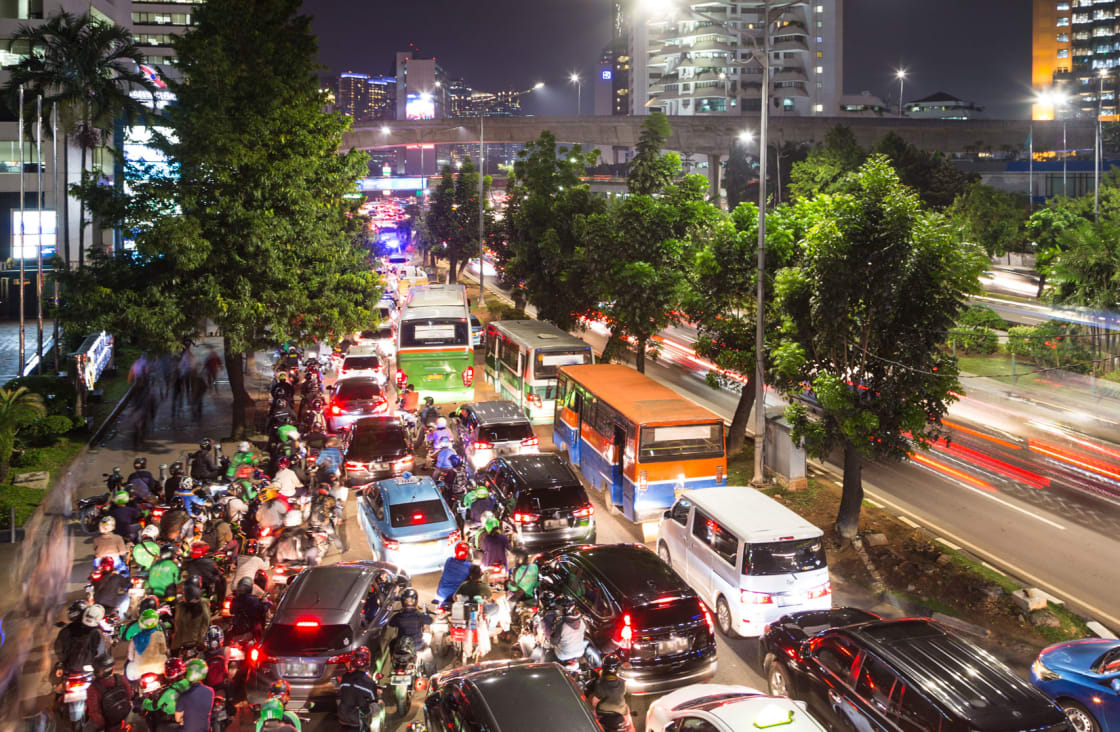
As you might expect, November to February is the most popular time for American and European vacationers, with some 55 million travelers descending on the region eager to escape their respective winters and take advantage of the optimal weather conditions. If you wish to avoid the crowds of tourists, it is better to steer clear of these months.
If you can stand the heat, why not wait a little longer until the crowds subside during the hotter months between March and May. Crowds of a different kind take to the streets in early April, as Buddhist locals let their hair down across Thailand and Laos with their New Year celebrations. Depending on your travel aspirations this may be a reason to aim for this month rather than avoid it.

Public holidays can mean unexpected disruptions to services, transportation, and attraction opening times, but if you are prepared, Southeast Asia’s vivid festivals can prove to be one of the highlights of your trip.
Between January and mid-February, Vietnam’s seven-day Tet (Tet Nguyen Dan) festival marks the advent of spring and the start of the Lunar New Year and gives you the chance to experience traditional and colorful customs across the country, from lantern and flower festivals to Buddhist pagoda rituals. The Buddhist New Year celebrations that take place across many parts of Southeast Asia during April are deeply rooted in tradition and revolve around the cleansing of sins, but Thailand’s Songkran festival has taken this to a new level, evolving into a world-famous water fight, with no one out of bounds for soaking during three days of watery mayhem.
Head to Sanur’s sandy beaches in Bali during July for a spectacular kite festival, where stunning kites of all different shapes, colors, and sizes take to the skies in the hope of persuading the Balinese Hindu Gods to grant a plentiful harvest for the coming year.
During September and November respectively, little Laos is home to larger than life festivals, firstly with the colorful costumes and aquatic parades of its dragon boat races along the riverbanks of the Mekong, and secondly with the glittering Boun That Luang Festival in Vientiane, the country’s most important Buddhist festival and a spectacular sight to behold.

Southeast Asia is renowned to be easy on a traveler’s pocket (backpackers can get by on about $35/day), the countries of Laos, Cambodia, and Indonesia, especially. Despite the relative affordability of the region, there are certain times of year to travel that may stretch your dollar even further. If you can bear the heat of the hottest summer months between March and May, you will find flight and hotel costs tend to fall, especially to Vietnam and Thailand. The cheapest flights are likely found for travel between the less sought-after months between September and October, before the start of the dry (and most busy) travel season.
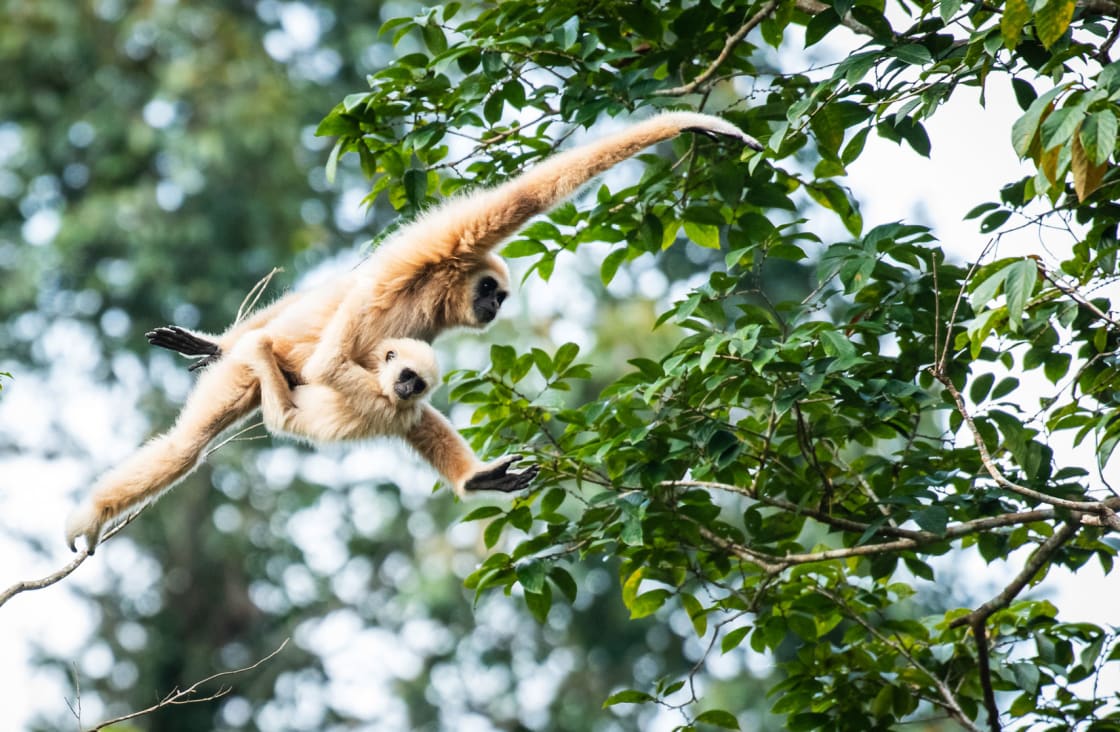
If you are heading to West Papua in search of birds of paradise performing their elaborate courting rituals, go in the dry season between September and October, when the lowlands are more accessible and birds most active. March through October is the ideal time to see Borneo’s endangered orangutans. Southern Thailand’s Khao Sok National Park is a great place to see leopards, sun bear, gibbons, tigers and elephants, with recommended tours taking place in October, November and May.
If you are a keen diver and want to spot Whale Sharks, it is important to know that these animals are migratory. For your best chances of spotting them, head to Myanmar’s Mergui Archipelago between late January through April, Thailand’s Koh Tao between March and May or September and October, or West Papua’s Cenderawasih Bay where they can be seen year-round but best observed between August and October.
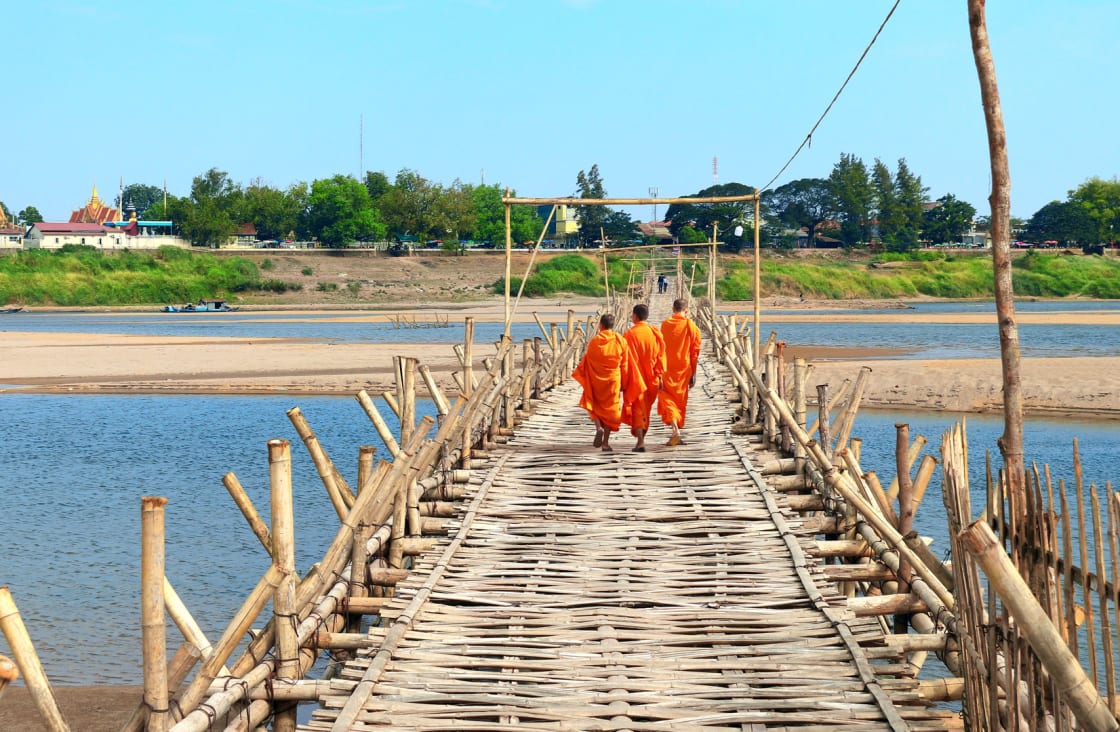
Weather-wise, the best time to cruise the Mekong in Vietnam and Cambodia falls anywhere between November and March, November being quite cool with not too much rain and temperatures rising to reach their peak around April-May. The rains will start in late May or June, and most ships will suspend operation for yearly maintenance around June and July.
When planning the Lower Mekong cruise, it isn’t only the weather that you should think of. If you hope to cruise across Tonle Sap lake, choose the months right after the rainy season (high water season) between August and mid-November, when the waters are high and ships can enter Tonle River and Tonle Sap lake. In the low water season, the river is too shallow and the boats take a different route – to Kampong Chhnang and Kampong Cham.
Traveling on the Upper Mekong in Laos is best between November and January when the weather is good and the water levels high after the rainy season, which starts around May and subsides around October.

Generally, Indonesia has great weather year-round, but it does experience heavier rains from October through April. The monsoon is not even throughout the archipelago, therefore cruises are operated accordingly to the best conditions in the region.
Bali and Komodo areas are great to visit from May to September, with dry and warm weather (and Bali festivals in place). Borneo is always hot and humid but will see less rainfall in the same months as Bali.
Raja Ampat is great for divers in September to April, due to the high number of manta rays, but the calmest waters and best visibility is in November-March, and this is when many cruise lines decide to reposition to that area.
Weather-wise, the best time to cruise the Mekong in Vietnam and Cambodia falls anywhere between November and March, November being quite cool with not too much rain and temperatures rising to reach the peak around April-May. The rains will start in late May or June, and most ships will suspend operation for yearly maintenance around June and July.
When planning the Lower Mekong cruise, it isn’t only the weather that you should think of. If you hope to cruise across the Tonle Sap Lake, choose the months right after the rainy season, when the waters are high and ships can enter Tonle River and Tonle Sap lake. In the low water season, the river is too shallow and the boats take a different route – to Kampong Chnang and Kampong Cham. High water season starts in August and lasts approximately until mid-November.
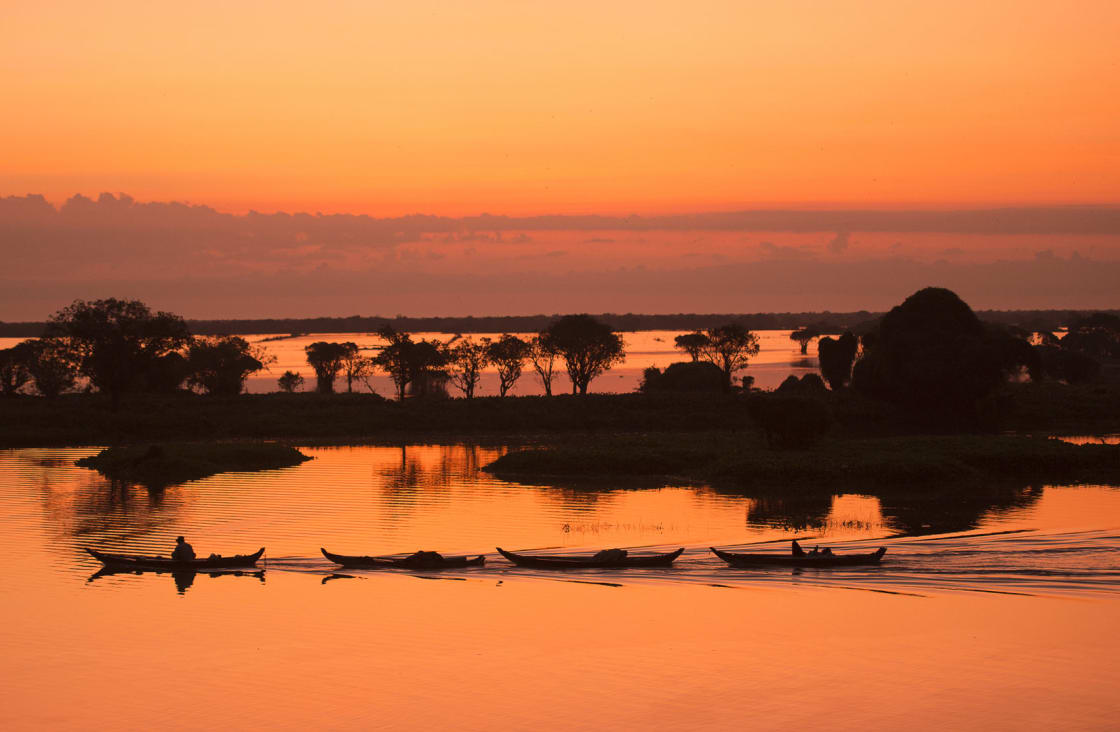
Traveling on the Upper Mekong is the best between November and January when the weather is good and the waters are high. The rains start around May and subside around October. The temperatures will be at the lowest in August-November and will spike in May-June.
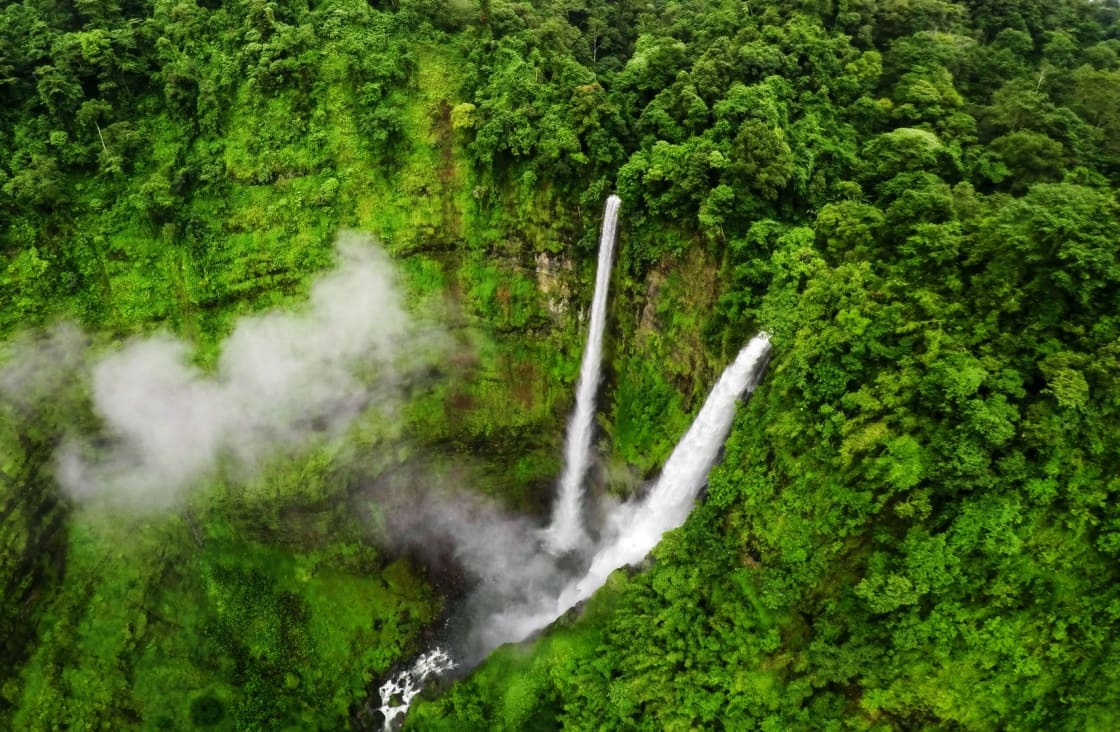
Landlocked Laos is rarely affected by coastal storms. The dry season has two sub-sections: a cool dry season from November to February and a hot dry season, March to late April. The wet (monsoon) season runs from around May to October, with August and September generally the wettest months. March and April can be blisteringly hot, while November to February are the cooler months.
Best to visit: Laos’ cool dry season – and peak season – has relatively low temperatures, cleaner air, and ideal river travel conditions. However, during the wet season, rivers are high and rapids submerged, meaning slow boats can make better paces and there are also lower temperatures but fewer crowds. Choosing the best time to visit Laos, consider the activities you plan.
To consider: during the hot dry season, inevitable smoke haze covers most of Laos, caused by farmer’s slash and burn traditional agricultural practices.
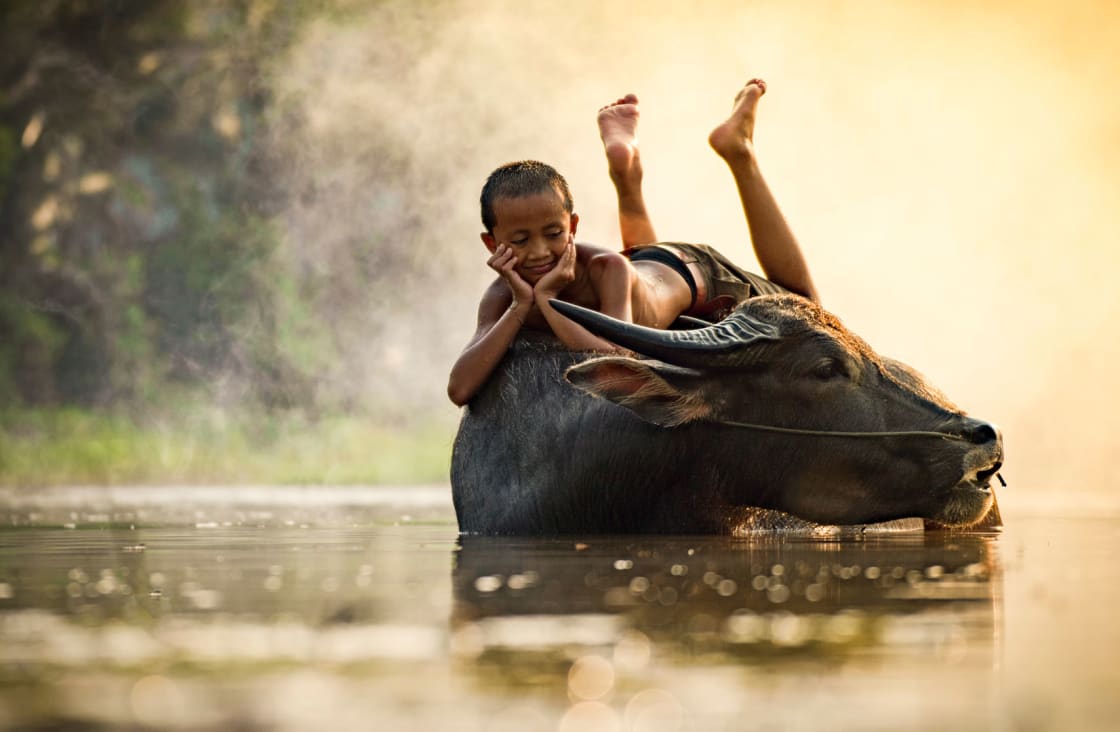
Cambodia’s dry season runs from late October to April, with November to January bringing cooler, more comfortable temperatures. March to June is Cambodia’s hottest time of the year, peaking in April and May. The wet season runs from May to October, around three-quarters of Cambodia’s annual rainfall, with rains generally heaviest from July to September.
Best time to visit: the dry season, especially November to January, is Cambodia’s peak travel time, due to the relative lack of rain and cool temperatures and southern islands brilliant sunshine with clear, calm waters – ideal for snorkeling and diving.
To consider: some might find the hottest months, April and May, uncomfortable for sightseeing. During the peak wet months, July to September, it can rain every day, with flooding and rough seas. On the upside, there are fewer crowds, less dust and lush greenery abound – sights like Angkor Wat look magnificent post-tropical downpour.
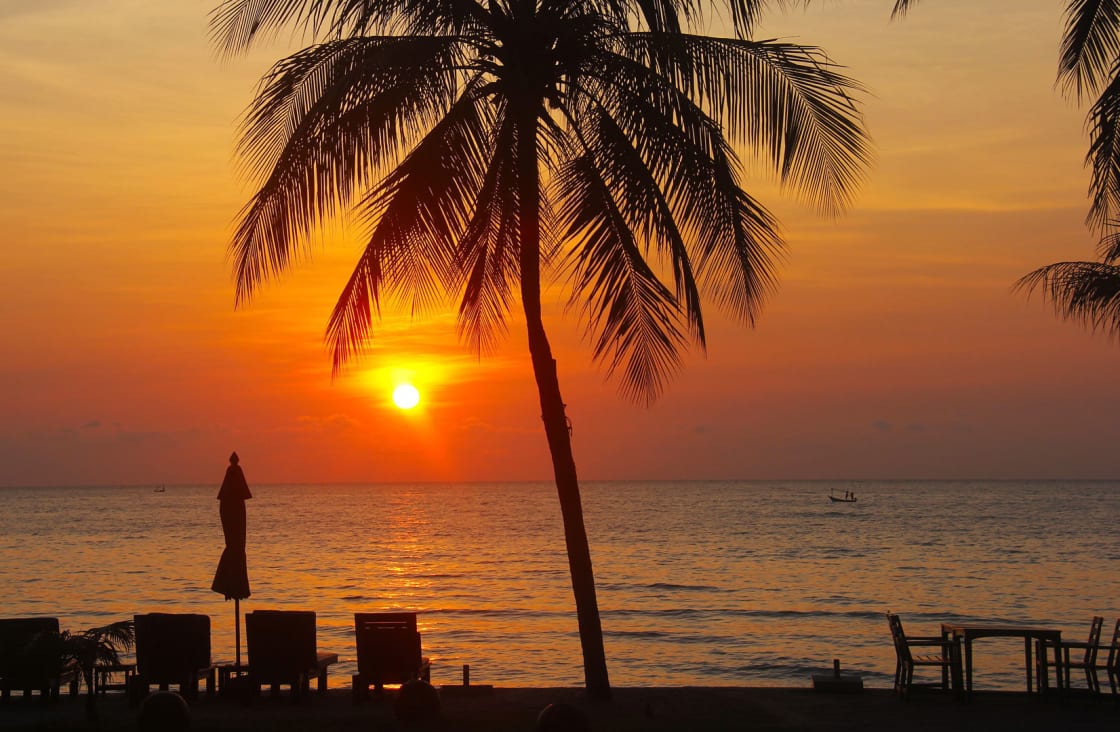
Although with regional variations, Thailand is tropically hot and humid for the majority of the country through most of the year. The wet, monsoon season runs from July to October, bringing most of Thailand’s annual rainfall and flooding is not uncommon in many parts. April is the hottest month. The best time to visit Thailand in a way is anytime, but when planning your holiday, do consider the region and activities you’re planning on.
Central and Northern Thailand has two seasons. The dry season is from November to May-June; cooler temperatures are generally felt from October to January and the main dry season runs from March to May. The wet season is June to October- November with Bangkok experiencing its wettest month in September.
Southern Thailand has two wet and dry seasons, but with east-west variations. The southern west coast (Andaman Sea) has a wet season and most rainfall from April to October. The southeast coast (Koh Phangan, Koh Samui, etc) is wet from September to December, rains can get torrential from October to November, making diving and beach life a no-no. Overall Thailand’s southern parts receive the country’s biggest rainfall, but other times of the year is dry, hot and sunny, with peak seasons, December and January.

Vietnam’s diverse weather patterns vary depending on the time of year and geographic location, with several microclimates to consider. Generally, the wet season runs from April to October, and the dry season from November to March. When planning your Vietnam holiday and considering the best time to travel, do consider the activities and regions of interest.
Northern Vietnam: has a cool to cold season, from November to March and a warm to hot, wet season (from April to October). December and January can get quite frosty in the far north mountains and heavy mists around this time can reduce visibility in tourist favorites, Sapa and Halong Bay. The wettest months are July and August, the driest, December and January.
Central Vietnam: while the coastal areas see rainfall between April and September, it’s less than other parts of Vietnam, but from August to early January, northern-central Vietnam (Hoi An, Danang and Hue), can receive considerable rain; Hoi An’s Ancient Town invariably floods ctober and November. This region can also be greatly affected by typhoon season, August to November, with severe storms lashing the coasts. The southern-central coastal strip, from Nha Trang to Mui Ne, is less affected with a longer dry, sunny season, albeit Nha Trang undergoes a wet, windy micro-climate November to January when beaches and diving are greatly impacted.
Southern Vietnam: sees much of its rain in the wet, monsoon season, roughly June to November.
Best time to visit: Northern destinations, such as Hanoi and Sapa are best in the spring and autumn months, with little rain, clear skies, temperate conditions, and beautiful flowers. The coastal stretch from Hue/ Hoi An down to Nha Trang is best from January to June, while southern Vietnam’s HCMC, Mekong Delta and Phuc Quoc are ideal, November to April.
To consider: Typhoons from July to September-November can sometimes wreak havoc across Vietnam, especially the north and central regions, affecting boat journeys. Winds and rough seas from June to September curtail beach and diving activities on Phu Quoc Island.

A volcanic archipelago of 17,500-plus islands across the equator, Indonesia is hot throughout the year and with minor regional exceptions, has two distinct weather seasons. The dry season runs from April-May to September and the wet, monsoon season, late October to late March, with the heaviest rains in January and February. By March to April, Indonesia’s most popular tourist regions, including Bali and Lombok, are finishing-up their rainy seasons.
Best time to visit: The dry season months, around May to October should guarantee sunny, dry conditions with few exceptions, perfect for surfing, diving, and trekking. Bali’s second peak season July and August coincides with the European vacationers, with cooler evening temperatures than earlier in the year.
To consider: During the wet season, Indonesia experiences heavy rains especially January and February and Bali suffers serious ocean plastic pollution; however it’s still the peak season for Christmas and New Year vacations. Conversely, Raja Ampat (Papua) experiences rough seas and windy conditions from June to September-October, making dive sites limited or inaccessible. As the world’s largest Muslim nation (with exceptions, such as Hindu Bali) expect some service and travel disruptions during Ramadan (fasting month) between April and July.
While Rainforest Cruises aim to provide accurate and up-to-date information, we make no representations as to the accuracy or completeness of any information herein or found by following any link on this site. Rainforest Cruises cannot and will not accept responsibility for any omissions or inaccuracies, or for any consequences arising therefrom, including any losses, injuries, or damages resulting from the display or use of this information.




